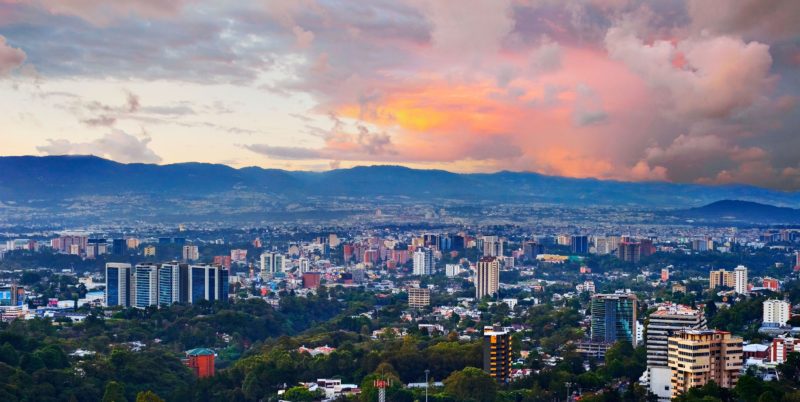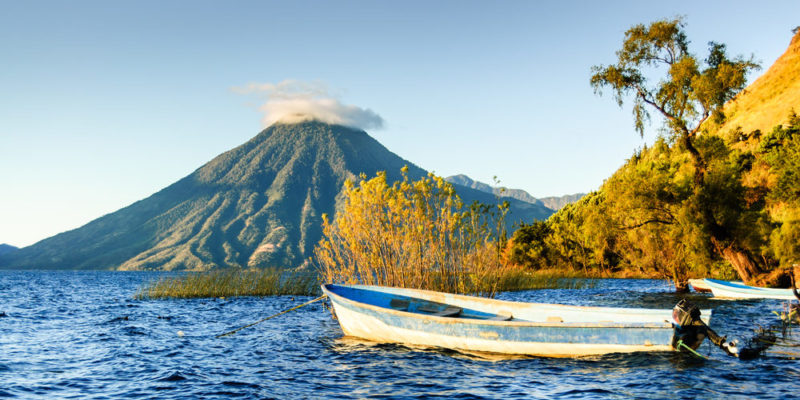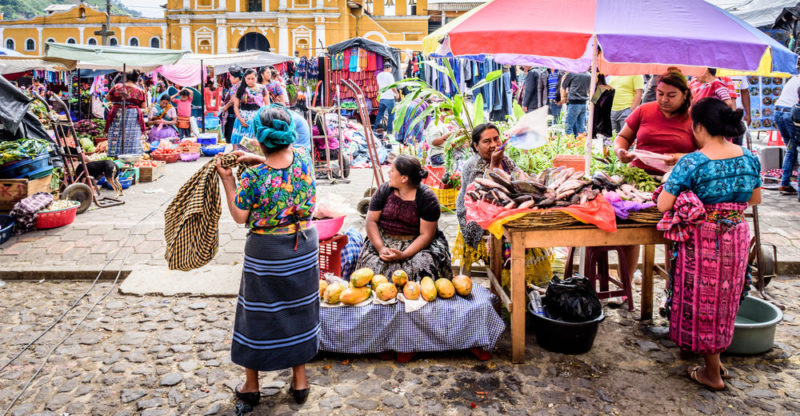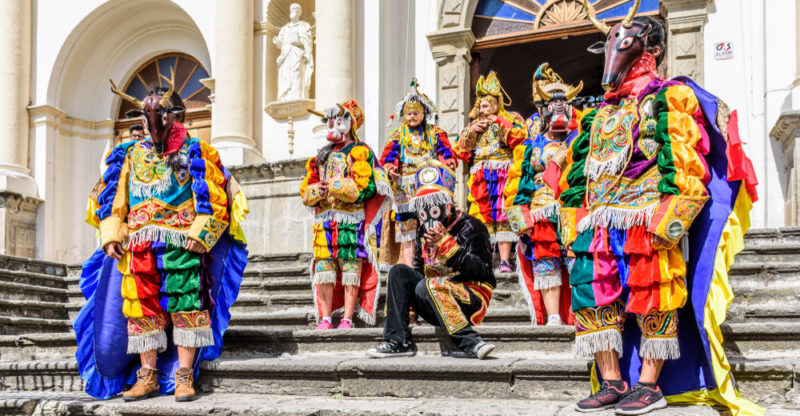We explain everything about Guatemala, what its geography is like and its climate. In addition, what are its characteristics, economy and more.
What is Guatemala?
Guatemala, officially known as the Republic of Guatemala, is a sovereign nation of the Central American continent , whose territory was part of ancient Mesoamerica , one of the cradles of civilization, and the birthplace of the Mayan and Olmec cultures .
Like many Central American nations, in Guatemala the historical heritage of the Spanish colony is combined with the strongholds of the pre- Columbian civilizations that emerged in ancient times.
Its territory, mostly mountainous, is rich in biotic reserves and has great ecological beauty , as well as being a reservoir for numerous important archaeological niches.
Its population, mostly mestizo and indigenous , faces important challenges inherited from its history of dictatorships , revolutions and a Civil War, as well as significant margins of poverty and economic inequality.
His name is Guatemalan and Guatemalan , and his currency is the Quetzal.
Limits and territorial extension of Guatemala

Guatemala is located in Central America and is bordered to the north and west by Mexico , to the east by Belize and the Gulf of Honduras, and to the south by Honduras, El Salvador and the Pacific Ocean .
The surface of its territory covers some 108,889 km2 , one of the smallest in the continent . 400 km of it are coastline.
Guatemalan name
The name of Guatemala comes from a Nahuatl word: Quauhtlemallan , which translates "Place of many trees".
Guatemalan Capital

The capital of Guatemala is Guatemala City , whose official name is Nueva Guatemala de la Asunción. There are the headquarters of the Guatemalan public power and the headquarters of the Central American Parliament.
Its estimated population is more than 4,700,000 people , taking into account its entire metropolitan area, which makes it the most populous urban center in Central America . The city has been rebuilt numerous times due to natural disasters , mostly earthquakes.
Geography of Guatemala

The territory of Guatemala is mostly mountainous, especially from the Northwest to the Southwest , where it has a chain of plateaus known as the Altos de Guatemala.
The maximum height of the region is the Sierra Madre, with abundant volcanoes such as Tajumulco (4,220 masl) and Tacaná (4,092 masl), the highest in the subcontinent.
Despite its small size, the country has a very high biodiversity and abundance of biomes (7), ranging from beaches on the Pacific coast to low plains and mountain ranges.
It comprises fourteen ecoregions and second place in terms of species described in the region.
In addition, it has seven Ramsar sites , wetlands of great importance, although up to 252 have been counted throughout the country.
Climate of Guatemala
Guatemala presents a great variety of climates . Around the central plateau it tends to be rather temperate , with an average annual temperature of 15 °C, while towards the coasts the climate tends to be tropical , hot and humid.
The mountainous areas have a cold mountain climate , except in the eastern areas where it becomes arid and warm. The rains in Guatemala take place between May and November, and are greater in the northern part of the territory (between 1,525 mm and 2,540 mm).
Guatemalan population

Guatemala has an approximate population of 16,051,208 inhabitants (2014) , with an average density of 142.6 inhabitants per square kilometer.
It is mostly mestizo (41%) or indigenous (39.9%) , but there is also a white (18.5%) and black (1.0%) presence, given its history of multiple colonizing presence (Spanish, Belgian, German and American).
The Guatemalan population faces significant levels of poverty and social and economic inequality , estimated at approximately 55% of poverty, of which 15% is in extreme poverty, and constituted mainly by rural poverty (82%). The illiteracy rate is around 30% of the population and life expectancy is 65 years.
Guatemalan Economy
Considered the tenth largest economy in Latin America , Guatemala is a developing country . Its main economic area is agriculture, since it is the world's largest exporter of cardamom, fifth in sugar exports and seventh in coffee production .
Another vital economic sector is tourism , which generates the country's second largest foreign exchange earnings, as well as remittances from Guatemalans who emigrated mainly to the United States , where there are some 1.2 million inhabitants, most of whom are undocumented.
Guatemalan culture

Many indigenous traditions are preserved hybridized with the Catholic one and are practiced on festive dates, in dances and traditional foods. On the other hand, the official language is Spanish, although many of the country's numerous ethnic groups speak it as a second language or do not speak it at all.
There are twenty-one Mayan languages spoken in rural areas in Guatemala ; a non-Maya Amerindian language , called Xinca, spoken in the southeast of the country; and an Arawak language, called Garífuna, spoken on its Atlantic coast. In addition, Guatemala is the fourth Latin American country in number of English speakers.
Guatemala's contribution to Hispanic letters has as its greatest exponent Miguel Ángel Asturias , winner of the Nobel Prize for Literature in 1967.
Pre-Columbian ruins of Guatemala

The current territory of Guatemala was part of Mesoamerica, one of the pre-Columbian regions with the highest cultural and demographic fertility on the continent, and one of the cradles of human civilization.
In particular, the Olmec (1500 BC – 500 BC) and Mayan (8000 BC-1697 AD) cultures prospered , of which numerous archaeological niches and buildings remain in Guatemala, such as Tikal, an entire Mayan city located in the department of Petén, or Uaxactún, in the same region, a city whose splendor took place around 900 AD.
Guatemalan history

The history of Guatemala begins with the Spanish colony , once the Mexica Empire and its neighboring cultures were defeated and absorbed by the Kingdom of Spain, creating the first settlement in the territory of present-day Guatemala in 1524, called Santiago de Guatemala.
During this colonial era the Captaincy General of Guatemala was attached to the Viceroyalty of New Spain , with its capital in Mexico City .
Independence from Spain took place in the 19th century and Guatemala joined the First Mexican Empire that replaced the Viceroyalty , but which was extremely brief and from which Guatemala and the rest of Central America would separate in 1823, thus forming the United Provinces of Central America. America, later called the Federal Republic of Central America.
This was followed, as in many young American republics, by an internal struggle between liberals and conservatives to define the fate of power, which resulted in totalitarian governments and armed insurrections.
Finally, in 1944, Guatemala emerged from the dictatorship of General Ubico Castañeda and began a process of modernization often called Guatemala's “ Golden Age ”, until tensions between pro-American and communist interests led to a confrontation between guerrillas from armed insurrection and counterrevolutionary military governments, faced in a Civil War. Peace and democracy would return in 1987.
The above content published at Collaborative Research Group is for informational and educational purposes only and has been developed by referring reliable sources and recommendations from technology experts. We do not have any contact with official entities nor do we intend to replace the information that they emit.
MA student of the TransAtlantic Masters program at UNC-Chapel Hill. Political Science with a focus on European Studies. Expressed ideas are open to revision. He not only covers Technical articles but also has skills in the fields of SEO, graphics, web development and coding. .
Leave a reply
Your email address will not be published. Required fields are marked *Recent post

Sport: What Is It, Types, Risks, Features, Characteristics and Examples

Dogs: Emergence, Features, Characteristics, Feeding and Breeds

Story: Definition, Elements, Structure, Features and Characteristics

